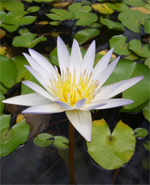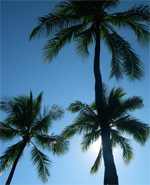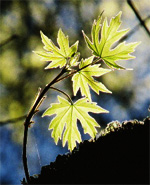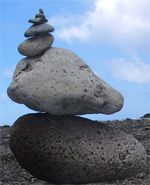Are Your Makeup Choices The Cause of Your Acne?
I tell my clients that there is no use applying acne medicine at night if harmful cosmetics are going to “poison” their face during the day, so throwing out every bottle and tube of comedogenic products and makeup is a must if you want to get clear for good.
To determine whether or not a product is safe to use, I recommend that my clients check the ingredients of every makeup and skin care product they own against the list of pore-clogging ingredients (adapted from Dr. James Fulton’s research and his book Acne Rx), and “patch test” any questionable products by swiping a bit behind the ear and watching for a reaction.
Whether you have severe acne or just that monthly hormonal flare-up, becoming a label detective could be your ticket to clear skin, and the first place you should check are the ingredients in your makeup.
The wrong cosmetic ingredients are so potent that they can cause acne in women who are not genetically prone to it, and while no one in the beauty industry intentionally set out to ruin the complexions of millions of women, this is exactly what’s happening.
For many, the words “minerals,” “non-comedogenic,” “oil-free,” “water-based,” “natural,” “eco-friendly,” “organic” and “vegan" are enough to make us feel that the product must be safe for acne, but by following this line of logic we have most certainly been duped.
In fact, the majority of products from the most-trusted makeup companies in the world contain ingredients that can clog pores and exacerbate acne.
Here are just a few common makeup products that contain ingredients proven to make acne worse--and some safe picks, too:
THE BAD
Tinted Moisturizer:
Cover Girl CG Smoothers SPF 15 Tinted Moisturiser (Isopropyl Palmitate)
EltaMD UV Physical Tinted SPF 41 (Isopropyl Palmitate)
Glo Minerals Sheer Tint Base (Isopropyl Myristate)
IMAGE I-Conceal (Algae Extract)
Laura Mercier Oil-Free Tinted Moisturizer SPF 20 (Ethyhexyl Palmitate)
Lorac ProtecTINT™ SPF 30 - Oil-Free Tinted Moisturiser (Glyceryl Stearate SE)
NARS Pure Radiant Tinted Moisturizer SPF 30+ (Algae Extract)
Neutrogena Healthy Skin Enhancer Tinted Moisturiser (Isopropyl Isostearate)
Rae Climate Control Mineral Tint SPF 20 (Potassium Chloride, Sodium Chloride)
Stila Sheer Color Tinted Moisturizer SPF 15 (Potassium Chloride, Sodium Chloride)
Trish McEvoy 'Protective Shield' Moisturizing Tint SPF 15 (Castor Oil)
Liquid Foundation:
Clinique Acne Solutions Liquid Makeup (Sodium Chloride)
Chanel Mat Lumiere Long Lasting Luminous Matte Fluid Makeup (Propylene Glycol, Stearic Acid)
Jane Iredale Liquid Minerals (Algae)
L'Oreal True Match Super-Blendable Makeup SPF 17 (Sodium Chloride)
MAC Studio Fix (Isostearyl Palmitate)
Maybelline Dream Matte Mousse (Dimethicone, Squalane, Jojoba Oil)
Neutrogena Healthy Skin Liquid Makeup (Ethylhexyl Palmitate)
Organic Wear Liquid Foundation SPF 15 (Glyceryl Stearate SE)
Prescriptives Virtual Matte Oil-Control (Algae Extract)
Revlon Colorstay for Combo/Oily Skin Makeup with SPF 6 (Sodium Chloride)
bareMinerals BARESKIN Pure Brightening Serum Foundation (Coconut Derivatives)
Pressed Powder:
bareMinerals READY SPF 20 Foundation (Algae Extract)
Mineralogie Pressed Mineral Foundation (Sweet Almond Oil)
Pur Minerals 4-in-1 Pressed Mineral Makeup Foundation With SPF 15 (Shea Butter)
Rimmel Stay Matte Pressed Powder (Isostearyl Neopentanoate)
Loose Powder:
bareMinerals SPF 15 Matte Foundation (Lauroyl Lysine)
bareMinerals READY Foundation (Lauroyl Lysine)
Everyday Minerals (Lauroyl Lysine)
Glo Minerals Loose Base (Lauroyl Lysine)
Jane Iredale Amazing Base (Algae Extract)
Concealer:
bareMinerals Blemish Therapy (Algae Extract)
bareMinerals Redness Remedy (Lauroyl Lysine, Oils)
Physicians Formula Twins Correct & Cover Cream Concealer (Ethylhexyl Palmitate, Sodium Chloride)
Neutrogena SkinClearing Blemish Concealer (Sodium Chloride)
Tarte Concealer (Microcrystalline Wax)
Blush:
Everyday Minerals Blush (Lauroyl Lysine)
bareMinerals READY Blush (Lauroyl Lysine)
NARS Blush (Laureth-4)
MAC pressed Blush (D&C Red #30)
Bronzer:
NARS Bronzer (Ethyhexyl Palmitate)
Primer:
Lorac Primer (Ethyhexyl Palmitate, Isononyl Isononanoate)
Lip Balm/Gloss:
Soft Lips (Ethyhexyl Palmitate, Menthol, Squalane, Myristyl Myristate)
Blistex Medicated (Camphor, Isopropyl Myristate, Isopropyl Palmitate, Lanolin Oil, Cocoa Butter)
Maybelline Baby Lips (Isopropyl Myristate, Isopropyl Palmitate, Shea Butter, D&C Reds)
EOS Smooth Sphere Lip Balm (Olive Oil, Coconut Oil, Shea Butter)
Burt’s Bees 100% Natural Lip Balm
ChapStick Classic Lip Balm SPF 4
Original Carmex
Neutrogena Norwegian Formula Lip Moisturizer SPF 15
Blistex Medicated Lip Balm SPF 15
THE GOOD
Tinted Sunscreen:
BB Cream (for special occassions only, like on your wedding day!:
Tarte BB Tinted Treatmnet 12-Hour Primer Broad Spectrum SPF 30
Pressed Powder/Foundation:
- (preferred): Neutrogena Mineral Sheers Powder Foundation
- Glo Minerals Pressed Base
- Physician's Formula Magic Mosaic
- Loreal Paris True Match
- (preferred): Mineralogie Loose Mineral Foundation
- bareMinerals SPF 15 Original Foundation (not Matte or READY)
- (preferred) Everyday Minerals Finishing Dust
- Youngblood Mineral Rice Setting Powder
- bareMinerals Mineral Veil
e.l.f. Contouring Blush and Bronzing Powder in St.Lucia or Antigua
Lip Balm:
- (recommended as a lip gloss over any matte lip color)
e.l.f. Makeup Mist & Set
Makeup Brush Cleaner:
Youngblood Brush Cleaner
SkinFit Labs Gentle Cleanser
If you want to check the ingredients on the products you already own and have thrown away the packaging, the best online sources for ingredient lists are makeupalley.com and drugstore.com. If you are prone to breakouts, or your skin has recently gotten worse, it’s worth it to do the research to make sure your makeup isn’t the culprit. To get rid of acne and take charge of your own skin care, always check the label!
A note about Lauroyl Lysine: Lauroyl Lysine is an Amino Acid derivative that is made from natural coconut fatty acid (coconut oil, which is highly comedogenic). It is most often used as a hair and skin conditioning agent, although it is also used in the formulation of products by contributing to a product’s texture by helping to gel solvents. Lauroyl Lysine's comedogenic properties first came to light when acne-prone women began breaking out from Bare Minerals Matte (but not Bare Minerals Original). The only difference in the two formulations is the inclusion of Lauroyl Lysine in the Matte version.
A note about Natural Butters and Oils: Natural oils like cocoa butter and coconut oil which are found in many “organic” skin care lines can wreak havoc on acne-prone skin. Other oils such as olive and lanolin are mildly comedogenic and can be a problem if formulated with other comedogenic ingredients. The only three safe oils are: sunflower oil, safflower oil and mineral oil. Even jojoba oil, which is a recommended moisturizer on acne.org, is mildly comedogenic.
A note about Squalane/Squalene: Squalene from shark liver oil is hydrogenated to form oxygen-stable squalane. Today, squalene and its hydrogenated counterpart, squalane, are obtained largely from olive and other natural oils, which are comedogenic. Of the two, squalene is highly comedogenic and its avoidance is recommended for acneic skin.
A note about Silicones: Silicone-based make-up uses a blend of water and silicone as the main ingredient. The most typical silicones are dimethicone and “volatile” silicones such as cyclomethicone and phenyl trimethicone. Silicone provides "slip,” allowing a product to blend over the skin smoothly and evenly, resisting filling in lines or large pores on the face. Many people--myself included--have had severe breakouts from traditional makeup primers like Smashbox Photo Finish, which is a “Holy Grail” product for many people. Silicones can turn real ugly if you don't cleanse your skin twice a day religiously. They form a "breathable web" that won't suffocate your skin like petrolatum or waxes, but they still create a protective barrier that can shield your skin from the environment and even comedogenic products that would otherwise break you out. If you don't apply them to clean skin, you can drive any grime or bacteria deeper into your pores. My best advice is to avoid silicones all together, or at the very least look for a product that contains only one type rather than several different ones.
A note about Isononyl Isononanoate: Isononyl Isononanoate is becoming known as one of the newer allergens to come onto the cosmetic market.
A note about Microcrystalline Wax: I can't confirm that it is comedogenic but when I use Microcrystalline Wax I break out so avoid the ingredient in my products.






